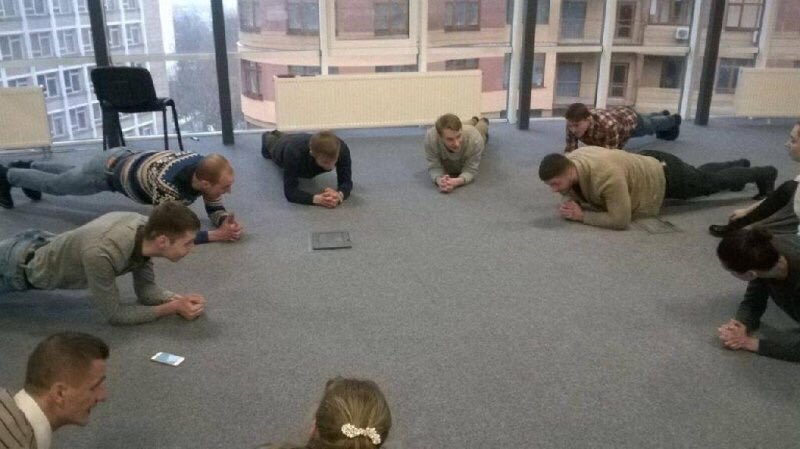Make daily standups great again
Ever felt that daily standups meetings can be long, repetitive or even feel like a waste of time? They shouldn’t be. A standup plays a vital role in Scrum or Kanban. Learn how to get more out of your standup meetings with a few practical tips:
1. Prepare
Update the status of your stories (or tasks) on the storyboard before the meeting. Write down the things you’ve done yesterday on a post-it. Bad memory? In Jira you can use the quick filters 'Recently updated' in combination with 'Only my issues'. Or generate a list of git commits with git standup. Keep in mind that your team is your audience, not the Scrum Master.

Not physically together in the same room? Setup a permanent Google Hangout and use an omnidirectional microphone. Using a permanent hangout team members can test their connection beforehand. Try muting your microphone when not speaking to avoid background noise.
2. Routine
Is someone on holidays? Missed the train? Working from home?
Always start the standup on time with the people who are present at that moment. It’s better to have the whole team there, but it should not be a reason to delay or cancel. Not many updates? Keep the meeting shorter.
There are plenty of reasons to start the meeting later, but this delays work for the rest of the team. And it frustrates people. Even worse, it may result in losing trust in doing standups at all.
3. Visualize
Everyone gathers around the storyboard during the standup. The storyboard should be visible to anyone, always. To make sure only one person is speaking at a time use a prop, such as a stress ball. Pass the ball on to the next person when you’re done. Rather than talking about story numbers or titles, point to them on the board.
Personalize the stories you work on with avatars. If a story is not finished, mark it with a dot. A story that is open for (e.g.) 3 days will have 3 dots. This helps the team to track progress or identify impediments.
If you prefer a digital storyboard (e.g. Jira) enable the view without swimming lanes, so that all stories appear on top. This gives a good overview of what the team is working on.

Storyboard in Atlassian Jira with swimming lanes disabled
4. Energize
A standup is not just a status meeting. It helps the team to understand that they are on the right track and to identify as a team. Every now and then invite a stakeholder to the standup as well. Stakeholders are the connection between the team and the user. They embody why the team is doing the work and for whom.
Although a standup is not the place for discussions, often important and useful ideas come up. It is sometimes the only moment of the day when the full team is available and listening. Rather than to kill any input during the standup, encourage people to bring up new ideas or things that need attention. Finding solutions for things that are brought up should be done after the standup though.
5. Evaluate
The format for standups is simple: each person tells what he did yesterday, what he will do today and if there are any impediments. People should be standing (and not sitting or leaning) during the meeting and it should not be longer than 15 minutes. For the rest, Scrum is not very prescriptive about standups. There are no magic ingredients.
That said, a good standup is different for every team. Regularly evaluate with the team if they are happy about it. Make sure there is routine, but also keep it fun. Switch the facilitator role, play a sound when the startup starts, try out different conferencing tools or do the standup while planking.

